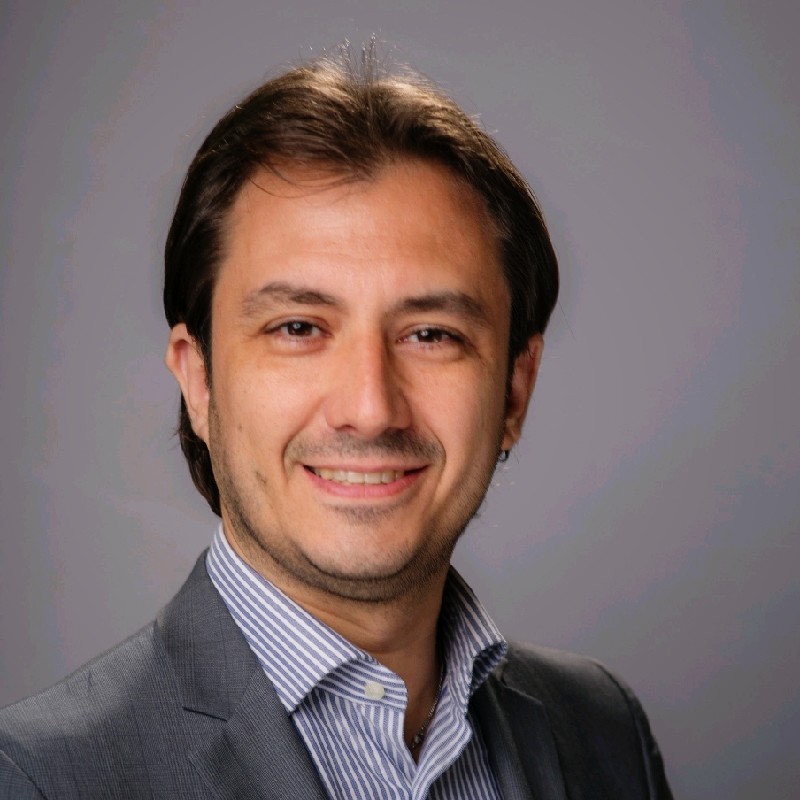If you are interested in the evolution of the insurance sector and what's to come, it is certainly worth taking a good look at what Ping An is doing. Luca Russignan, Associate Director, EY Global Insurance Knowledge Leader, visited Ping An headquarter in Shenzhen, China, together with the EY Global Insurance leadership team. He shares his thoughts and observations.
“When you look at the evolution of the insurance sector it is certainly worth taking a good look at what this company is doing, and this came at the perfect time as I am currently finalising the 2020 edition of the EY Global Insurance Outlooks. Let me share some of the key highlights that I have taken away from this visit!
Context
Before doing that, let’s set some context around Ping An history and current position. Ping An has been funded in 1988 as a three people operation. Peter Ma – chairman and CEO – is an individual that many would describe as a visionary and it is behind the global and technological DNA of the company, with Goldman Sachs and Morgan Stanley investing in the firm in 1999 and Ping An Technology established as early as 2002.
Today Ping An has about 1.6 million employees, 1.3 million agents and about 200 million customers in China. 60% of the top 100 senior management come from overseas. The company has a massive focus on research and development with 32,000 employees in this department and 1% of annual revenues invested in this space.
What about valuation and results I hear you saying. Ping An is ranked 7th in the 2019 Forbes 2000 list, it is ranked number 1 in market cap among global insurers and it is also the most recognisable global insurance brand. Its assets, revenues and profits have been growing at 20% CAGR over the last 20 years.
So how did Ping An achieve all this?
They have infused technology in everything they do, relentlessly experimenting with innovation, and maintaining a distinctive company culture while attracting and retaining the right talent.
Many of these points are very aligned with some of the key challenges the sector is facing. According to Gartner, in fact, only 5% of insurance companies rate themselves effective at harvesting results from digitisation and – according to Universum – the insurance industry hover between 14 and 18 position in the top 20 most attractive sectors for engineering and IT students.
The technology side is where Ping An really differentiate itself! The company view is that technology empowers finance and ecosystem and no other institution has such a strong focus on this strategy. In fact, Ping An is increasingly positioning itself as a technology company and some of their benchmarking are in fact with tech companies rather than with insurers. The company is in a fairly advanced stage of development of every relevant technology that is out there, from big data to cloud, from blockchain to AI.
In addition, Ping An – through OneConnect – is also selling some of its technology to other players in the market as they are confident their pace of innovation cannot be reached.

(Ping An Finance Center - Group Headquarters 1. Credit: Ping An)
Let’s look at a few examples:
- Facial recognition and voice recognition are extremely advanced with the company claiming a 99.8% and 99.7% accuracy respectively. These technologies can be used to identify policyholders on the phone extremely quickly or to allow employees in and out of the building in a beat.
- In the body language behavioral analysis arena Ping An tools include 17 facial features and 54 micro-expressions that can be used to identify fraudulent intentions. This technology is already being deployed to underwrite health insurance through 30-40 minutes of virtual interviews. As of now, 96% of their underwriting is being managed through AI in real-time
- AI, including artificial music and paintings, is another area of experimentation with Ping An platform able to realistically synthesize any voice with as little as 100 short sentences as sample
These technologies have endless applications, from improving the agents recruitment process, to shortening the expense reporting of their employees, down to individual ecosystems improvements.
Customer journey
Rather than talking about these ecosystems – that are finance, health care, automobile, smart city initiatives and housing – and are well covered, I wanted to share with you the customer journey they have brought to auto insurance, which is an excellent example of how new technologies can be used right now to completely change the customer experience.
Suppose you are about to buy your auto insurance. Your agent sends you a WeChat link to the policy where you can get all the relevant details, you accept the offer and sign online using facial and voice recognition for validation.
Unfortunately, you have an accident and you call your insurer, you are immediately identified and you clear security through voice recognition, you are asked to take a 360 degrees video of the car and submit it through the app. AI will evaluate the extent of damage in real-time pulling on a 50k+ car database with 60m parts. Your repair estimate is provided in near real-time and for damages below 3,000RMB (c420USD) you get an immediate reimbursement, for anything below 12,000RMB (c1,680USD) you are receiving your claim in less than 10 minutes. If damages are above this threshold and you are in a downtown area, Ping An will send you an investigator in 5 minutes.
Now imagine that as an insurer you are getting all this information in real-time on your interactive dashboard that allows you to tweak and improve on your process and see the immediate outcomes of your tweaking.
This is not the usual story about the future of insurance, this is happening right now
This is not the usual story about the future of insurance, this is happening right now and Ping An says that its average claim setting time is 168 seconds with 96.4% of urban onsite auto claims investigation in daytime processed in less than 10 minutes.
Now, I imagine many people reading this with a healthy amount of scepticism. The Chinese market has several unique dynamics, the attitude towards privacy is different from many other countries, regulation is less invasive, furthermore, Ping An is a relatively young company possibly less limited by the technology debt that many US and European insurers suffer.
Lessons that can be learned
Yes, true! But nonetheless, there are many lessons that can be learned.
- First, the ability to see technology as a true integrator and reposition your brand around this idea can be an incredible magnet for diversification and brand recognition.
- Second, regulation and privacy are certainly constraints but delivering real value and focusing on the benefits for the customer can shift perceptions and open new opportunities.
- Third, experimenting in small pocket - perhaps even with your own workforce - is key to understand what works and what should be scaled.
At EY we are looking into new ways to help our clients making this journey and extend it even further. If you want to know more about our views read our NextWave of Personal and Small Commercial Lines report here and stay tuned for the launch of our Global, regional and country outlooks for 2020 in early December!”
The views in this article which first appeared here are his own. They do not necessarily reflect EY’s position.

Luca Russignan
Luca is an experienced insurance professional focused on long-term trends in the life and non-life insurance sectors.
An insurance strategy professional with extensive experience in analyzing sector trends, identifying business needs and developing key initiatives, Luca is EY Global Insurance Knowledge Leader.
You may be interested in these too:
The next bancassurance wave could be driven by advisers and agents
It is your turn to shine - Chris Gardner
What are the odds of an airplane crash?
P.S: Join 10,000+ financial advisers on our complimentary VIP Weekly Newsletter